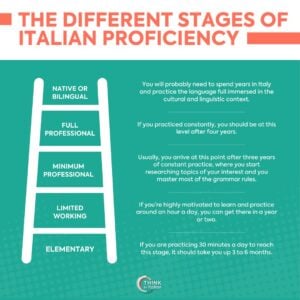Riflessivi apparenti: Explained
In Italian, there are verbs that look like reflexives (they use mi, ti, si, ci, vi), but are not! There are 3 types of riflessivi impropri:
- la forma riflessiva apparente;
- la forma riflessiva reciproca;
- la forma pronominale
Let’s take a look at the first ones.
These are verbs in which the pronominal particles (mi, ti, si, ci, vi) are not used as direct objects, but they represent indirect object.
If in reflexive verbs these particles mean “oneself”, here they mean “to oneself”.
Le ragazze si pettinano i capelli. = Le ragazze pettinano i capelli a sé stesse
Girls brush their hair. Lit. Girls brush hair “to themselves”.
In this case, the subject (le ragazze) is performing an action (si pettinano) on a direct object (i capelli), with si meaning “to themselves”, referred to le ragazze.
Riflessivi apparenti: Rules
These verbs behave exactly as reflexive verbs. The only difference is in the grammatical function of the pronominal particles (mi, ti, si, ci, vi).
Let’s look at the conjugation of some riflessivi apparenti. These are always followed by an object, as you will see in the examples below.
| Presente | |||
| Comprarsi (to buy) |
Pettinarsi (to brush) |
Mettersi (to put on) |
|
| io | mi compro | mi pettino | mi metto |
| tu | ti compri | ti pettini | ti metti |
| lui, lei, Lei | si compra | si pettina | si mette |
| noi | ci compriamo | ci pettiniamo | ci mettiamo |
| voi | vi comprate | vi pettinate | vi mettete |
| loro, Loro | si comprano | si pettinano | si mettono |
| Passato Prossimo | |||
| Comprarsi (to buy) |
Pettinarsi (to brush) |
Mettersi (to put on) |
|
| io | mi sono comprato/a | mi sono pettinato/a | mi sono messo/a |
| tu | ti sei comprato /a | ti sei pettinato/a | ti sei messo/a |
| lui, lei, Lei | si è comprato /a | si è pettinato/a | si è messo/a |
| noi | ci siamo comprati /e | ci siamo pettinati/e | ci siamo messi/e |
| voi | vi siete comprati /e | vi siete pettinati/e | vi siete messi/e |
| loro, Loro | si sono comprati /e | si sono pettinati/e | si sono messi/e |
Riflessivi apparenti: Examples
Here are some more examples:
Ieri ci siamo comprati una moto!
Yesterday we bought –to ourselves- a motorbike!
Oggi non mi sono pettinata i capelli.
Today I did not brush my hair.
Per uscire Giorgia si è messa un vestito.
To go out, Giorgia put on a dress.



















